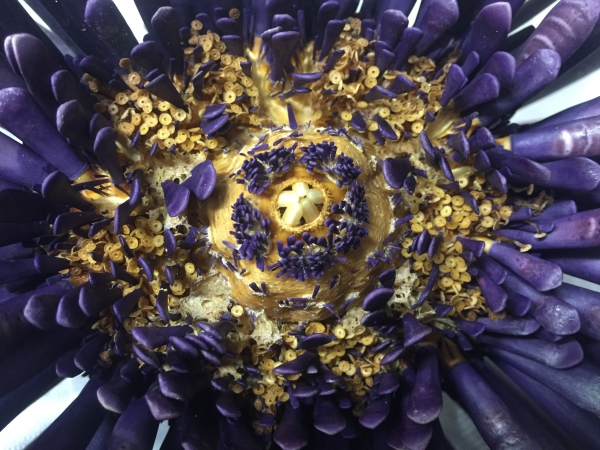The NIWA Invertebrate Collection mainly consists of samples collected in the deepsea, but occasionally we find shallow exceptions like this stunning sea urchin. This slate pencil urchin, or red slate pencil urchin, Heterocentrotus trigonarius (Lamarck, 1816) is found in the shallow tropical waters of the Indo-Pacific region.
There are only two species of Heterocentrotus (Echinometridae: Camarodonta), the other being the similar Heterocentrotus mamillatus (Linnaeus, 1758). The NIWA Invertebrate Collection hold specimens of both species of Heterocentrotus, all of which were collected over three voyages to the Cook Islands from 1960 – 1981, run by NIWA’s predecessor the New Zealand Oceanographic Institute (NZOI). Some NZOI scientists were fortunate enough to have sailed to tropical localities and along with these urchins they collected other enchinoderms, corals, molluscs and even island rats! These collections have since been merged into the NIWA Invertebrate Collection (including the rats) and most, if not all, of our tropical specimens can be attributed to the fascinating NZOI voyages.
Highly adapted for life in the extreme surf zone
Members of the family Echinometridae tend to be highly adapted for life in the extreme surf zone, and many have developed oval tests to help them wedge into crevices in reefs. H. trigonarius is one such urchin and it is widely distributed and common throughout the South Pacific Ocean, sometimes forming large colonies. In addition, it has tough pointy spines and can grow up to 30 cm from spine tip to spine tip – making it potentially harmful to humans if trodden on! This species has been recorded as an ‘unlikely landing hazard’ in one report and capable of inflicting ‘painful wounds’ in another (Paulay, 1989), where several people were pierced in the feet by its spines while walking along a reef during their study, .
Colourful defences
H. trigonarius is characteristically bright purple or violet, but can have varying patterns on their spines, by contrast to H. mamillatus spines, which are bright red-orange and white. As a result of these vibrant colours and patterns, Heterocentrotus spines are popular for making jewelry and other crafts such as wind chimes.
References:
- Paulay, G. (1989). Marine Invertebrates of the Pitcairn Islands: Species Composition and Biogeography of Corals, Molluscs and Echinoderms, Atoll Research Bulletin No. 326. Issued by National Museum of Natural History Smithsonian Institution. Washington, D.C. http://biodiversitylibrary.org/page/39997849
- Kroh, A. (2015). Heterocentrotus trigonarius. In: Kroh, A. & Mooi, R. (2015) World Echinoidea Database. Accessed through: World Register of Marine Species at http://marinespecies.org/aphia.php?p=taxdetails&id=213386 on 2016-09-26
- Clark, A.M. & Rowe, F.W.E. 1971. Monograph of shallow-water Indo-West Pacific echinoderms: i-vii, 1-238, pls 1-31. London, Trustees of the British Museum (Natural History). http://www.abctaxa.be/downloads/additional-information-volume-1/works-famous-holothuroid-workers/fwe-rowe/MonographIndoWestPacific.pdf

